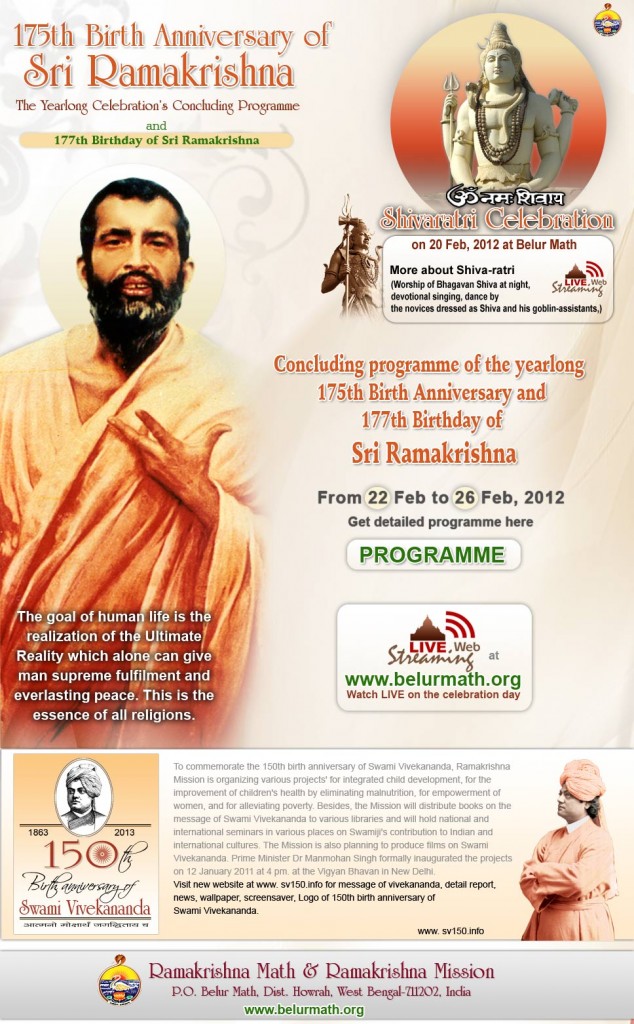Search results for jyotish (27)
Vortrag Ayurveda, Jyotish, Edelsteine
Alle Hochkulturen machten sich die Wirkung von Edelsteinen zunutze: insbesondere in der vedischen (indischen) Astrologie, wie auch im Ayurveda werden sie auch heute noch als Mittel zur Heilung und als Schutz vor Unfällen, Krankheiten u.s.w. verwendet.
Die heilige Hildegard von Bingen (1098-1179) bezeichnet Edelsteine als „/Gabe des Schöpfers an sein Geschöpf, ihm gegeben, um seine Heilung zu fördern, seine Leiden zu heilen…/“.
Im Rahmen des Vortrages erhalten wir Einsicht in das jahrtausende alte Wissen über Edelsteine, ihre Wirkung und Verwendung in der Astrologie sowie einen Einblick in die planetarische Zuordnung und deren Bedeutung. Hier erfahren wir Authentisches aus den ältesten Wurzeln und Zweigen ayurvedas & jyotish (astronomie).
Ort: Shakti-Center, Malfattigasse 37, A-1120 Wien
Zeit: 2-3 h /ab 10 Teilnehmern, bitte um Voranmeldung
Telefon: +43 (0) 650 841 28 55
mail: melanie@deinayurveda.net
ayurveda, jyotish & edelsteine
In den Puranas (Teile der vedischen Literatur) wird beschrieben, dass das göttliche Licht die Planeten entstehen lässt und nährt. Diese geben das Licht weiter an die Edelsteine. Es besteht also eine Beziehung zwischen dem göttlichen Licht, dem jeweiligen Planeten und dem entsprechenden Edelstein. Die Edelsteine wiederum geben dieses Licht weiter an ihre Umgebung und, wenn sie mit dem menschlichen Organismus in Verbindung stehen, geben sie diese Energie an den Menschen weiter.

Sivaratri Celebration and Sri Ramakrishna’s Brithday Celebration :
Sri Ramakrishna’s 175th Birth Anniversary : The Yearlong Celebration’s Concluding Programme and Sri Ramakrishna’s 177th Birthday Celebration : Watch LIVE from 22. Feb to 26. Feb 2012
Maha Shivratri ( Sanskrit:महा शिवरात्रि, Tamil:மகா சிவராத்திரி, Hindi:महाशिवरात्रि Nepali: महाशिवरात्रि) or Maha Sivaratri or Shivaratri or Sivarathri (Great Night of Shiva or Night of Shiva) is a Hindu festival celebrated every year on the 13th night/14th day in the Krishna Paksha (waning moon) of the month of Maagha (as per Shalivahana or Gujarati Vikrama) or Phalguna (as per Vikrama) in the Hindu Calendar (that is, the night before and day of the new moon). The festival is principally celebrated by offerings of Bael (Bilva) leaves to the Lord Shiva, all day fasting and an all night long vigil. Per scriptural and discipleship traditions, the penances are performed in order to gain boons in the practice of Yoga and meditation, in order to reach life’s summum bonum steadily and swiftly. International Mandi Shivratri Fair is held every year.
Shiva-ratri (Magha-krishna-chaturdashi) :
Shiva-ratri is observed on the 14th lunar day of the dark fortnight of the month of Magha (February-March). Watch LIVE Feb. 20. 2012 http://www.belurmath.org/siva_ratri.htm
Mahashivaratri is on February 19th in Entire North America, Canada, and United Kingdom. For Middle East, India, Srilanka, Malaysia, China, Japan, Singapore, Australia, Newzeland and Fiji Mahashivaratri is on Feburary 20th 2012. Please remember there is no Chaturdashi during 20th February’s midnight in America, Canada and United Kingdom. Hence If you are observing Mahashivaratri on February 20th in America, Canada, and United Kingdom you are observing amavasya not mahashivaratri. However in Middle East, India, Srilanka, Malaysia, China, Japan, Singapore, Australia, Newzeland and Fiji Mahashivaratri is on Feburary 20th 2012.
http://www.belurmath.org/siva_ratri.htm
http://en.wikipedia.org/wiki/Sivarathri
Hindu Festivals 2012 Time Table:
http://www.mypanchang.com/hindufestivals2012.php
IISH Heritage Center – Message to the World


The Vedas (Sanskrit वेद véda, „knowledge“) are a large body of texts originating in ancient India. Composed in Vedic Sanskrit, the texts constitute the oldest layer of Sanskrit literature and the oldest scriptures of Hinduism. Read More: > HERE <
The Vedanga ( vedÄ�ṅga, „member of the Veda“) are six auxiliary disciplines traditionally associated with the study and understanding of the Vedas. Shiksha (śikṣÄ�): phonetics and phonology (sandhi), Kalpa (kalpa): ritual, Vyakarana (vyÄ�karaṇa): grammar, Nirukta (nirukta): etymology, Chandas (chandas): meter, Jyotisha (jyotiṣa): astronomy for calendar issues, such as auspicious days for performing sacrifices. Traditionally, vyÄ�karaṇa and nirukta are common to all four Vedas, while each veda has its own śikṣÄ�, chandas, kalpa and jyotiṣa texts. The Vedangas are first mentioned in the Mundaka Upanishad (at 1.1.5) as subjects for students of the Vedas. Later, they developed into independent disciplines, each with its own corpus of Sutras. Read More: > HERE <
A UNESCO World Heritage Site is a place (such as a forest, mountain, lake, desert, monument, building, complex, or city) that is listed by UNESCO as of special cultural or physical significance. The list is maintained by the international World Heritage Programme administered by the UNESCO World Heritage Committee, composed of 21 state parties which are elected by their General Assembly for a four-year term. The program catalogues, names, and conserves sites of outstanding cultural or natural importance to the common heritage of humanity. Under certain conditions, listed sites can obtain funds from the World Heritage Fund. The programme was founded with the Convention Concerning the Protection of World Cultural and Natural Heritage,which was adopted by the General Conference of UNESCO on November 16, 1972. Since then, 186 state parties have ratified the convention. Read more : >HERE<
Message to World – Indian Heritage on science and technology has a history of not less than 5000 years starting from the subjects of mathematics, astronomy, geometry, health science, food science, yoga, Metallurgy (science of metals), space science /air crafts technology, plant science and so on. There are thousands of books catalogued by different organizations and institutions in India and abroad, which are presently available either in the printed form or as manuscripts in palm leaves.
This history record, starts from Vedic period. The mathematics and astronomy were dealt together in hundreds of text books written in Sanskrit and in regional languages.
Mahabhaskareeya, Laghubhaskareeya, Vateswara Siddhanta, Bruhat samhitha, Sidhanta siromony and many similar books still available in the printed form with English commentaries. They give the subject matter qualitatively and quantitatively at par with the modern developments.
The books on health science, Charaka Samhita, Susrutha samhitha, Ashtanga hrudaya and so on written many thousand years ago are the part of curriculum in more than 300 ayurveda colleges in India and more than one hundred institutions outside India.
Indian heritage on the metallurgical sciences (loha thanthra, rasa saastra and so on) also goes back from the period of Yajurveda. Many ancient textbooks describe the rasa sastra and artha saastra giving detailed descriptions on the ores, minerals and methodology of extraction and purification of metals and their compounds, which has been supported by the archeological evidences.
Indian technological heritage has vast area of knowledge from metallurgy, ceramics, glass, textiles, furnaces, leather, civil engineering and architecture, granite and marble, and so on. These are clearly demonstrated in ancient Indian books, cave temples, temples, forts, palaces, etc..
Indian Institute of Scientific Heritage (IISH) was established on the Sravana Pournami day in August 1999 and registered as a charitable trust (328/99/iv) during the last quarter of 1999. Then onwards IISH has been undertaking the mission of learning and teaching the ultra ancient heritage of Bharath(India) using ultra modern scientific and technological tools.
The ultimate aim of this mission is to make every Indian proud of his heritage.
Our aim is to inform the world about the glorious scientific, rational and logical heritage of India and also inform the world to practice and adopt these message in their life to lead a happy life in the 21st century. IISH is undertaking this mission of taking the message to 100 million people before the 31st December 2010. Hundreds and thousands of mission oriented workers are taking part in this patriotic mission of spreading the message of our motherland. We learn and teach the past glory, present achievements and future aims of Indian in each and every field, taking the inspiration for the past glory of this nation.
We inform the world that this heritage of India is the property of Hindus, Muslims and Christians of India and also belongs to all beloved children of this motherland.
Thus IISH spreads the scientific, technological, spiritual, sociological, anthropological, managemental messages to the world, in such a way that these messages can be adopted for the modern world.
UNESCO – The Tradition of Vedic Chanting
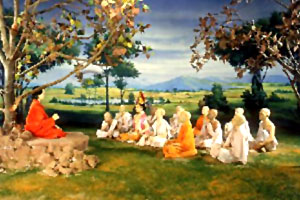
Shiksha is one of the six Vedangas
> UNESCO PUBLISHING, PURANAS & YOGA <
A shakha (Sanskrit śÄ�khÄ�, „branch“ or „limb“), is a Hindu theological school that specializes in learning certain Vedic texts, or else the traditional texts followed by such a school. An individual follower of a particular school or recension is called a śÄ�khin.- the term is also used in Hindu philosophy to refer to an adherent of a particular orthodox system.
A related term caraṇa, („conduct of life“ or „behavior“) is also used to refer to such a Vedic school : „although the words caraṇa and śÄ�khÄ� are sometimes used synonymously, yet caraṇa properly applies to the sect or collection of persons united in one school, and śÄ�khÄ� to the traditional text followed, as in the phrase śÄ�khÄ�m adhite, („he recites a particular version of the Veda“)“. The schools have different points of view, described as „difference of (Vedic) school“ (śÄ�khÄ�bhedaḥ). Each school would learn a specific Vedic Saṃhita (one of the „four Vedas“ properly so-called), as well as its associated Brahmana, Aranyakas, Shrautasutras, Grhyasutras and Upanishads. Read More: > HERE <
The Vedas comprise a vast corpus of Sanskrit poetry, philosophical dialogue, myth, and ritual incantations developed and composed by Aryans over 3,500 years ago. Regarded by Hindus as the primary source of knowledge and the sacred foundation of their religion, the Vedas embody one of the worlds oldest surviving cultural traditions.
The Vedic heritage embraces a multitude of texts and interpretations collected in four Vedas, commonly referred to as books of knowledge even though they have been transmitted orally. The Rig Veda is an anthology of sacred hymns; the Sama Veda features musical arrangements of hymns from the Rig Veda and other sources; the Yajur Veda abounds in prayers and sacrificial formulae used by priests; and the Atharna Veda includes incantations and spells. The Vedas also offer insight into the history of Hinduism and the early development of several artistic, scientific and philosophical concepts, such as the concept of zero.
Expressed in the Vedic language, which is derived from classical Sanskrit, the verses of the Vedas were traditionally chanted during sacred rituals and recited daily in Vedic communities. The value of this tradition lies not only in the rich content of its oral literature but also in the ingenious techniques employed by the Brahmin priests in preserving the texts intact over thousands of years. To ensure that the sound of each word remains unaltered, practitioners are taught from childhood complex recitation techniques that are based on tonal accents, a unique manner of pronouncing each letter and specific speech combinations.
Although the Vedas continue to play an important role in contemporary Indian life, only thirteen of the over one thousand Vedic recitation branches have survived. Moreover, four noted schools in Maharashtra (central India), Kerala and Karnataka (southern India) and Orissa (eastern India) are considered under imminent threat.
The Vedic literature that has come down to our times is attached to various traditional schools of recitation and ritual called the ‘shakhas’. All the four Vedas have more than one shakha extant. In the past, the number of shakhas studied was many times more.
According to the Mahabhasya of Patanjali, there were 21 shakhas of Rigveda, 9 of Atharvaveda, 101 of Yajurveda (86 of Krishna Yajurveda and 15 of Shukla Yajurveda, according to later authorities) and a 1000 varieties of chanting of Samaveda. Maybe, the number 1000 for the Samaveda merely refers to ‘numerous’. Nevertheless, although only 20 or so Shakhas of the Vedas are extant now, we do possess names of most of the lost Shakhas of the Rigveda, Yajurveda and Atharvaveda. Fragments of many of the lost shakhas are also available as quotations in ancient works. For the Samaveda, we do not have more than 40 names extant.
Two different Vedic shakhas might share one or more texts amongst themselves. Conversely, the distinction between two shakhas of the same Veda might result from the use of a different Samhita text, and/or a different Brahmana text, and/or different Kalpasutra text and so on. For e.g., the Baudhayana and the Apastamba shakhas use the same Taittiriya Brahmana, Taittiriya Samhita and Taittiriya Aranyaka but follow different Kalpasutras. On the other hand, the Shankhayana and the Kaushitaka shakhas use the same Samhita and Shrauta Sutra but their brahmanas have slightly different readings and their Grhyasutras are quite different.
A group or a community of people who study a particular shakha in its entirety (Samhita + Brahmana + Aranyaka + Kalpasutra + any additional texts) and perform its ritual constitute a ‘charana’. For instance, Brahmins who study the Taittiriya Samhita/Brahmana/Aranyaka together with the Kalpasutra of Apastamba say – “I follow the Apastamba charana’.
In certain cases, we have instances of ‘mixed shakhas’. For instance, the followers of Shakala shakha have adopted the Kalpasutra of Ashvalayana. The Ashvalayana shakha, which had the now well-known Ashvalayana Sutra, has in turn lost oral traditions of its Samhita. Likewise, the Kaushitakins of Kerala often use the Samhita of Shakalas.
The various shakhas of the Vedas were, at one time, spread throughout South Asia. Their geographical location has not been constant down the ages, as communities of Brahmins professing a particular shakha migrated from one part of India to the other, or adopted another shakha when it became impossible for them to sustain the tradition of their own shakhas.
It is quite certain however, that the tradition of recitation of the Vedic texts originated in north India, and this region was the area where almost all the shakhas originally arose. From various sources, we can determine the following geographical distribution of Vedic Shakhas at various intervals of times, and their present state of survival:
YOGA, TREE AND OUR UNIVERSE
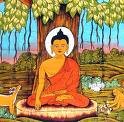
The Originar of Hatha-Yoga
Tree is the highest evolved form in plant kingdom. Man is the highest evolved species in Animal kingdom. Mushrooms are the best fungi visible on this planet. There is commonality of forms among all these highest evolved forms among different type of life-forms -Tree-like structure.Man is a cerebro-spinal being sheathed within a fleshy body. Most evolved form of cell is neuron that mediates consciousness is Tree-like structure. Surprisingly, most powerful thing that mankind achieved viz. atom bomb , produce Tree-like clouds after exploding on the surface.
Tree-like structure in Nature!
One can find out where else do Tree-like structure in nature exist. Pliny, the Younger linked the eruption of Vesuvius eruption in 79 A.D. with Italian umbrella pine. It is now an established scientific fact that the most powerfur process within earth, volcanic plumes that move inside earth is umbrella-shaped with a column & umbrella spinning about vertical axis( Tree-like). The most terrible force on the surface of the earth are the Tornados which are again Tree-like shapes with a column & an umbrella. Tree-like shape is found in other very powerful phenomena like lightening flashes, electric sparks, river delta, snowflakes, coral .
Tree-like structure is characteristics of every visceral system. Biologists trace this form in the mosses, lichens, shrubs, root system, mammalian lung bronchioles, cells of nervous system, veins & arteries forming cardio-vascular system. Wheresoever there are branching system, that invariably culminate in a Tree-like structure.
Tree & Fractal Geometry
In last fortnight, a brilliant paper was published in ‚Advances in Soft Computing“, under the title“Algorithms for Tree-like Structure Generation“ by Anna Romanowska, a neuro-anatomist et al. The team characterised Tree-like structure as that form which bifurcates but do not form any cycles. The team picked up the concepts of fractal geometry & fused with algorithms to create a Recurrent Algorithm. Self-similarity and repetition of sequence( iteration) is generated by a bifurcating cascade. The team concluded that if living system are generated recurrently, complex organic structures like roots, bronchial system in lungs emerge.
Now that an algorithm for Tree-like structure has been generated, it will be feasible in a decade to manufacture on mass scale silicon bronchial/ cardio-vascular/ neural system .
Before the advent of Fractal geometry by Benoit Mandelbrot during 1970s, the question of Tree-like structure had perturbed many a great minds. Hisao Honda of University of Kyoto published a paper on “ Description of the Form of Trees by the parameters of the Tree-like body“ in the Journal of Theoretical Biology, May, 1971. Honda concluded that Tree architecture maximizes flow access. He found stastitical similarity in living & non-living world, among branching in living system & geological & geophysical system.
- Meet Swami SIVANANDA friends, yoga, studies, at facebook <
- Meet Bhagavad Gita friends, yoga, studies at facebook <
- Meet Patanajali friends, yoga, studies at facebook <
- Meet Buddhism, friends, studies, Medicine at facebook <
- Meet Paramahansa Yogananda friends, groups, studies at fb <
- Meet Raja Yoga, Friends, Group, studies at facebook <
- Meet IYENGAR (B.K.S.), Yoga, Friends, Studies, Groups at fb<
- Meet Swami Vivekananda, Yoga, Studies, Friends, Groups at fb<
- Meet Bhagavad Gita, Yoga, Studies, Friends, Groups at fb <
- Meet Ramana Maharshi Groups, Friends, Studies, Fans at fb<
- Meet Hinduism, Groups, Friends at facebook <
- Meet Kashmir Hinduism, Studies, Friends at facebook <
- Meet Shaktism and Devi the Godess at facebook <
- Meet Saundaryalahari: Wave of Bliss by Shankaracharya at fb <
- Meet Arsha Vidya Gurukulam, Studies, Friends, Fans, at fb <
- Meet Advaita Vedanta,Groups,Studies, Vivekananda at fb <
- Meet Yogi Yogendra Nath, Studies about Goraksha at fb <
- Meet Jaya Kula and the three ways of Practicing tantra at fb <
- Meet VASTU, Friends, and Study Groups at facebook <
- Meet Jyotish, Friends, and Study Groups at facebook <
- Meet Sacred Geometry at facebook <
- READ MORE HERE:
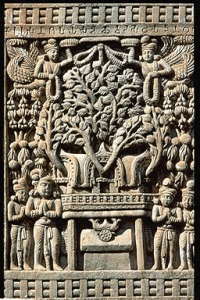
Morphic field & Morphic Resonance!
Tree-form is found in lower kingdom of Animal as well as Fungi. Jelly fishes or the polyp, these are invariably shaped like Trees. The colonies of proliferating marine organism replicate this form. It is interesting that jellyfishes which have no neurons & man with maximum neurons are essentially same in shape. Great Scottish biologist, Sir D’Arcy Thompson wrote in 1917 „On Growth and Form“, to analyse patterns & shapes in nature. His erudite tradition sd being carried by Rupert Sheldrake, a British biologist. He has done extensive work on the concept of morphic field & morphic resonance. By morphic resonance, he explains the influence of Like upon Like by which a connection among similar fields is established. He has shown in his work example of crystallization. It is very difficult to crystallize a new compound for the first time. Once it is done, a morphic field emerge. It is easier next time if someone does elsewhere in the world. There is a cumulative influence & it gets easier & easier to crystallize the compound. There is an accelerated rate of crystallization . Similarly, in learning among rats, this phenomena has been experimentally confirmed. It is difficult for a rat to pass through a maze for the first time. But, once a rat does this, another rat elsewhere does it much easily. And with each learning , there is spontaneous spread of new habits. For Sheldrake, evolutionary spread of new habit is not genetic but depends on a kind of collective memory due to morphic resonance.
This can be easily comprehended in case of human. It was very tough to manufacture clock or VCD or computer. More people are manufacturing, easier it is getting to manufacture. Watches, transistora & VCDs are now cottage industry. Who knows in future, robotics will emerge as similar kind of easily handled industry and there will be garages in every nook & corner of city to repair robots or even remodell robots by neighbourhood mechanic.
Sheldrake further proposes the concept of the „Memory of Nature“. Habits of nature depend on non-local similarity reinforcement. Through morphic resonance, the pattern of activity in self-organizing system are influenced by similar patterns in the past. He brings back the idea of Carl Jung‘ collective unconscious.
Examining Growth of Tree-Form!
I find the concept of morphic resonance appealing. That can explain this frequent recurrnce of similar pattern in nature. If we ponder over the shape of DNA & its future. The fluid around earth’s inner core creates a helical movement and generates magnetic field. The geodynamo of the earth is a self-replicating system that help explain the continuity of magnetism in earth’s core , otherwise it would have dissipated within 20,000 years. Now, the transformatory biological molecule,DNA, is helical as well as self-replicating. Within geo-physical processes, we know that Tree-like plumes are created. Now, this geophysical structure resonates throughout future evolution of biological world. For every plume within, there is a tornado on the surface. This first form of powerful process recurs at the level of the most developed categories at various levels, may it be fungi, or plants or animals or cells. And, that form recurs in even man-made powerful processes like atomic explosions.Upon visualizing this sequence, I can very well predict that the most successful biological robots or most efficient spaceship for planetary travels would have Tree-like architecture. Our Discovery spaceship is a poor materialization of that critical architecture.
Tree & bifurcation!
This Tree-like structure itself is generated by recurrent self-similarity which results due to behaviour of a dynamic system. Now, the chaos theorists have worked out very well that how in a dynamic system , a stage of crisis is set in and at the point , there are two possibilities for the system to transform. Sometimes, the system oscillates between two possibilities as found in certain chemical clocks extensively investigated by Nobal laureate Ilya Prigogine.Most of the times, the branches grow further and then bifurcate. This is iteration of self-similarity that later results into Tree-like structures.
If this kind of bifurcaing iteration is fundamental to our changing Reality which is dynamic, and there is morphic resonance, one can draw the contours of this phenomena of emergence of Tree-like structure at a higher level.
End of biological evolution!
The bifurcation, that determines DNA-replication to cell-division, has finally achieved its destiny in the biological world in the form of Human beings. We are the highest biological form and the biological evolution has now concluded. There is no further scope of biological evolution beyond us.Perfect biological bifurcating branching system has been achieved. Our lungs, our cardio-vascular system, neural system .. everything has emerged as mere consequence of cascading bifurcation. Surprisingly, we have greater number of most evolved cells viz. neurons (200 billions) which themselves replicate own form at macrolevel. The cerebro-spinal system is a magnified neuron. We are the only animal to walk on 2 legs. Penguins do perform but lack other binarities. We have two legs, two hands, two nostrils, two ears, two testicles, two mammary glands, two eyes, two kidneys, two hemispheres in brain, two atrium, two ventricles in heart, two excretory points, two lips, two jaws. Our thinking pattern is also binary. Our categories are in twos- good/bad, high/low,sacred/profasne, self/other… We donot yet understand that this duality in thought is rooted in hemispheric brain or in fractal geometry. There is no more bifurcation & branching possible in bodily architecture of human beings. This is the end-point of biological evolution. Now, mankind is on verge of developing biological robots & higher order machine consciousness therby imbuing consciousness to physical world bypassing the biological evolution. We are becoming the co-creator of the Universe as well as agent to accelerate self-consciousness of physical matter in the universe.
Trees are our cousin!
Now, the issue of Tree-like structure resonates into our collective psyche. Tree is the source of wisdom, healing, nourishment, power. Bible myth has Tree . Newton discovered moodern science sitting under an apple Tree. Buddha discovered non-theistic self-awareness sitting under a peepul Tree. In Tibetan tradition, powerful meditation requires visualizing Tree of lineage with various Gurus on different branches. These kind of visualization has transformative effect on our consciousness. In every culture, Tree occupies a significant position in rituals & mythology. We feel special feeling with Tree. Our romantic mood, our wisdom, contemplative mood, aesthetic mood.. orbit around physical & metaphoric Tree. Tree have power to transmit some kind of healing power to us. Tree are the source of healing body through fruits & herbal medicine . Tree heals our body, mind as well as soul, if any. The processes involved may be a kind of morphic reonance that vitalizes self-similar cardio-vascular, respiratory & neural system.Trees are our morphic cousins. We feel guilty & hurt when trees are cut or when those are under environmental threat.
Future?
One thing is certain. Future robots & spaceships which would be most efficient to survive would have Tree-like architecture. We would have very little to do with blooming of age of nanotechnology, biotechnology & Artificial intelligence. Successful creation of algorithm for Tree-like structure has made it more likely that artificial human organs can be manufactured at industrial level. When death will be conquered after successful download of Memories & large scale diffusion of bionics, We would have enough time to resonate with biological Trees in solitude & steer mankind towards a spiritual evolution as biological evolution from DNA-pathway has reached a dead end!
(Niraj,1.11.2009)
Puja Net, (free) Audio Library, Yagya Group
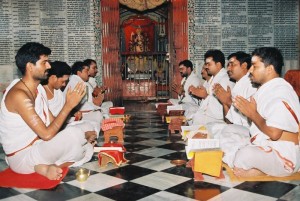
* AUDIO LIBRARY (Lakshmi Mantras) *
> VEDA, VEDIC SCIENCES, PANCHANGAM <
> THE 12th BAVA VEDIC ASTROLOGY CONFERENCE <
PūjÄ� (Devanagari: पूजा) (alternative transliteration Pooja, Sanskrit: reverence, honour, adoration, or worship) is a ceremony of gratitude or a religious ritual performed as an offering to various deities, distinguished persons, or special guests. It is done on a variety of occasions and settings, from daily puja done in the home, to temple ceremonies and large festivals, or to begin a new venture. Puja is modeled on the idea of giving a gift or offering to a deity or important person and receiving their blessing. The two main areas where puja is performed is in the home and at public temples. There are many variations in scale, offering, and ceremony. Puja is also performed on special occasions such as Durga Puja and Lakshmi Puja. Puja or Pooja is also a Hindu female first name. Read More: > HERE <
In Hinduism, Yajña (Sanskrit यज्ञ yajña; also anglicized as Yagna, Yagya or Yadnya) is a ritual of sacrifice (Monier-Williams gives the meanings „worship, prayer, praise; offering, oblation, sacrifice“) derived from the practice of Vedic times. It is performed to please the gods or to attain certain wishes. An essential element is the sacrificial fire – the divine Agni – into which oblations are poured, as everything that is offered into the fire is believed to reach the gods. As the name of the service, the term Yagna is linguistically (but not functionally) cognate with Zorastrian (Ahura) Yasna. Unlike Vedic Yajna, Zoroastrian Yasna has „to do with water rather than fire“ . Read More: > HERE <
The Yagya Group was formed by Ben Collins and Sri Narasimha Bhattar following a trip to India in 1998. After enjoying several weeks of traditional Hindu yagya ceremonies, we returned and found that a surprising number of people in America were interested in access to effective and affordable yagyas. So we began offering them monthly, sharing the costs amoung the sponsors and donating the proceeds to the Venkateshwara temple in Malibu, California.
As the group expanded we wanted to be able to offer a wider variety of yagyas and use more priests. So we were fortunate enough to purchase a facility in Kanchipuram, a wonderful temple town south of Madras. With that, we were able to offer a greatly expanded variety of yagya services. Seetharam was planning to move to India and so we were fortunate to be able to have him manage all the puja.net yagyas in person.
With the new facility and Seetharam’s on-site presence, we currently offer yagyas every single day of the month in Kanchipuram!
Not surprisingly, the group has expanded to include participants from around the world; US, Europe, Scandanavia, South America, Africa, Australia and New Zealand. The group continues to grow on the basis of the consistent results that the yagya performances bring.
Please address your comments, questions, or requests to me via email.
Our mission is to make yagyas available in a way that is as close to the timeless traditions of the Vedas as is possible. With that in mind, our mission standards are:
-
All yagyas will be performed in the most traditional and authentic manner possible, without regard to cost or time considerations.
-
All yagya services will be priced so that they are within financial reach of any individuals who wish to participate. The price of the yagya service should bear a direct correlation to the cost of performing the yagya.
-
Service, not profit, is the driving motive behind puja.net.
-
Our sponsorship of yagyas is intended not only to result in positive benefit for ourselves. Through our participation, we honor and preserve the Vedic traditions in India, and provide meaningful employment for highly qualified priests.
Vedic Astrology: BAVA „Health and Healing“

> BAVA’s 12th Annual Conference 2010 <
‚Health and Healing‘, 22nd -26th April 2010
> FREE Vedic Astrology, Buddhism,Feng Shui, and more…. <
Jyotiṣa (Sanskrit jyotiṣa (Devanagari ज्योतिष), from jyótis- „light, heavenly body“: also anglicized Jyotish and Jyotisha) is the Hindu system of astrology (also known as Indian astrology, Hindu astrology, and of late, Vedic astrology). Read More: >HERE<
Vastu Shastra (vÄ�stu śÄ�stra, also Vastu Veda, „science of construction“, „architecture“) is a traditional Hindu system of design based on directional alignments. It is primarily applied in Hindu architecture, especially for Hindu temples, although it covers other applications, including poetry, dance, sculpture, etc. The foundation of Vastu is traditionally ascribed to the mythical sage Mamuni Mayan. While Vastu had long been essentially restricted to temple architecture, there has been a revival in India in recent decades, notably under the influence of V. Ganapati Sthapati of Chennai, Tamil Nadu (b. 1927), who has been campaigning for a restoration of the tradition in modern Indian society since the 1960s. Read More: >HERE<
Vedic astrology was developed by the ancient sages of India over 5000 years ago. Called Jyotish, the science of the light of life, it is part of the Vedic wisdom.
This includes Ayurveda, Vastu (Vedic architecture) and Yoga.
The Vedas and the vast Vedic Literature, mankind’s oldest and most sophisticated body of knowledge, detail the relationship between astronomy, astrology and human beings.
Vedic astrology is a powerful medium which can be used to understand ourselves through the study of the stars and the constellations.
It predicts and offers remedies for mundane difficulties as well as guide posts to an individual’s spiritual path.
> Meet VASTU, Friends, and Study Groups at facebook <
> Meet Jyotish, Friends, and Study Groups at facebook <
> Meet Sacred Geometry at facebook <
> Vedic, Vedic Sciences, Panchangam <
> ÖAG- Österreichische Astrologische Gesellschaft Wien <
DIVERSE KALENDARIEN, EINE ÜBERSICHT
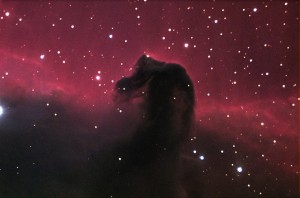
The Julian calendar, a reform of the Roman calendar, was introduced by Julius Caesar in 46 BC, and came into force in 45 BC (709 ab urbe condita). It was chosen after consultation with the astronomer Sosigenes of Alexandria and was probably designed to approximate the tropical year, known at least since Hipparchus. It has a regular year of 365 days divided into 12 months, and a leap day is added to February every four years. Hence the Julian year is on average 365.25 days long.
The Julian calendar remained in use into the 20th century in some countries as a national calendar, but it has generally been replaced by the modern Gregorian calendar. It is still used by the Berber people of North Africa, on Mount Athos, and by many national Orthodox churches. Orthodox Churches no longer using the Julian calendar typically use the Revised Julian calendar rather than the Gregorian calendar. Read More: > HERE <
The Gregorian calendar is the internationally accepted civil calendar. It was introduced by Pope Gregory XIII, after whom the calendar was named, by a decree signed on 24 February 1582, a papal bull known by its opening words Inter gravissimas. The reformed calendar was adopted later that year by a handful of countries, with other countries adopting it over the following centuries.
The Gregorian calendar reform contained two parts, a reform of the Julian calendar as used up to Pope Gregory’s time, together with a reform of the lunar cycle used by the Church along with the Julian calendar for calculating dates of Easter. The reform was a modification of a proposal made by the Calabrian doctor Aloysius Lilius (or Lilio).[4] Lilius‘ proposal included reducing the number of leap years in four centuries from 100 to 97, by making 3 out of 4 centurial years common instead of leap years: this part of the proposal had been suggested before, e.g. by Pietro Pitati. Lilio also produced an original and practical scheme for adjusting the epacts of the moon for completing the calculation of Easter dates, solving a longstanding difficulty that had faced proposers of calendar reform. Read More: > HERE <
The Hindu calendar used in ancient times has undergone many changes in the process of regionalization, and today there are several regional Indian calendars, as well as an Indian national calendar.
Most of these calendars are inherited from a system first enunciated in Vedanga Jyotisha of Lagadha, a late BCE adjunct to the Vedas, standardized in the Surya Siddhanta (3rd century CE) and subsequently reformed by astronomers such as Aryabhata (499 CE), Varahamihira (6th c. CE), and Bhaskara (12th c. CE). There are differences and regional variations abound in these computations, but the following is a general overview of Hindu lunisolar calendar.
Yoga: First one computes the angular distance along the ecliptic of each object, taking the ecliptic to start at Mesha or Aries (MeshÄ�di, as defined above): this is called the longitude of that object. The longitude of the sun and the longitude of the moon are added, and normalized to a value ranging between 0° to 360° (if greater than 360, one subtracts 360). This sum is divided into 27 parts. Each part will now equal 800′ (where ‚ is the symbol of the arcminute which means 1/60 of a degree). These parts are called the yogas. Read More: > HERE <
Solar Calender: > HERE <
Lunar Calender: > HERE <
Veda, Vedic Science´s , Panchangam: > HERE <
> Meet Understand and Learn Hindu Panchangam at facebook <
> Meet Free Vaisnava Calender at facebook <
> Meet VEDIC, mathematics, jyotish, astrology, astronomy at fb <
AYURVEDA CONCEPT OF RASAYAN THERAPY

( ayurveda4uall’s Photos – ALL India confrence Delhi 7-8 Oct )
Rasayan, a Sanskrit word (with literal meaning: Path (ayana) of the Juice (rasa), or Elixir vitae), is used to describe chemistry and alchemy, and chemistry is generally called Rasayan Shastra in Sanskrit,Nepali, Marathi, Hindi, Kannada and several other languages. Ancient rasayan texts center around the use of prepared forms of mercury (see samskaras), as do occidental alchemical texts. However, there is also ample mention of the preparation of medical tinctures in the ancient science of rasayan; rasayan is in fact a part of Ayurveda. Read more: > HERE <
Concept of Rasayana Therapy
Rasayana Tantra is one of the eight major divisions of Astang Ayurveda. In Ayurveda, one of the major methods of presentation of positive health has been described i.e. Rasayana.
Sushruta has defined a healthy man as one who has:-
• Equilibrium of the Doshas Sama dosha.
• Normal functioning of Agni Sama Agni
• Normal condition of 7 Dhatus Sam Dhatu
• Normal Excretion of waste products Sam Malkriya.
Beside this Atma (Soul), the Indriyas or sense organs and Mana or mind should be happy and cheerful Prasanatamendriya Mana (Su.Su.15/15). The current modern definition of health is also same “Health is a state of complete physical, mental and social well being and not merely absence of disease. (W.H.O.)
Healthy state of mind and body can be achieved by Rasayana Therapy or Rejuvenation Therapy
Rasayana Stands as an answer to solve the problem of healthful longevity including mental development and resistance against disease. That is why; Rasayanatherapy has been included as one of the eight major divisions of Ashtang Ayurveda. Rasayana Chikitsa or rejuvenation therapy helps to promote and preserve health and longevity in the healthy, and to Cure disease in sick. We all want to look forever young and increase our life span by staying healthy, Rasayans or vitalizers, as they are called, do exactly the same. They replenish the vital fluids of our body, thus keeping us away from diseases. Rasayana refers to the nutrition and its transportation in the body. Such a state of improved nutrition is claimed to lead to a series of secondary attributes like longevity, immunity against diseases, mental competence and delaying of aging.
Rasayana is actually that which increases the essence of each Dhatu, starting from Rasa. Taking Rasayana is helpful to increase the immunity of person to keep him away from diseases. The person become healthy and strong .Literally the term Rasayana refers to the means of obtaining the optimum nourishment to the Dhatu.
Meaning of Rasayana
The word Rasayana is composed of two words Ras + Ayan. The means by which one gets the excellence of Rasa (The nourishing fluid which is produced immediately after digestion) is known as Rasayana. Apart from the excellence of Rasa, the individual is endowed with Psychic excellence like sharp memory, by virtue of rejuvenation therapy. The term Rasayana connotes a specific meaning. Drugs, diet and regimens which promote longevity by delaying aging and preventing diseases are called Rasayana. The term Rasa has different connotation. In the present context, it means the body fluid which is responsible for nourishment of entire physique. Impairment of circulation of this body fluid results in diseases and decay. This body fluid of good quality should not only be present in adequate quantity, but also it should be able to permeate (circulate) throughout the various cells of the body to provide the type of nourishment they need.
Rasayana is a specialized type of treatment influencing the fundamental aspect of body viz. Dhatus, Agni and Srotansi and ojus etc. Rasayana Chikitsa boosts theojus and immune system. The adjective Ojaswiis used to describe those people who keep good health in all seasons and all stages of life. It is like obtaining a high rank in a physical or mental fitness. Ojus gives a bright look, sharp memory, high performance and every expected pleasure.
Historic Consideration of Rasayana
Rasayana therapy is as old as the Vedas because many references on Rasayana therapy are available in the Atharva Veda (atharvaveda 8/7/4). Extensive descriptions of divine Rasayana agents like Soma are available in classics. References about Achara Rasayna and Sadvrita are also available in the vedic texts similar to Charakadescription (Rig-Veda 5/1/7 and Atharvaveda 16/2/2)
Besides extensive references is available regarding the superiority of certain other common Rasayana drugs like Pippali, Jivanti and Punarnava etc. Similarly a concept of Ajasrika Rasayana also appears in vedic literature.
Vedas have seriously considered the problems of aging and its delaying. It has been the cherished wish of human race to achieve long life and to live at least 100 years in perfect health. “Jivema Sharadah Shatam” (Rigveda 10/39/8).
Probably all these ideas at a later stage necessitated the development of a full-fledged clinical discipline like Rasayana therapy to deal with the problem of aging, its delaying.

…my beloved grandfather who was also great vaidya . ( Ayurvedic doctor ) had open ayurveda college in 1970´s then then he moved to noida near to delhi on speical invitation of his holiness maharishi ji and worked 20yrs in maharishi Ayurveda.
vaidya adwait tripathi
Arogya sadnam
H-129, Sector-41
Noida-201302
On call special appointment can fix for patient for Free Pulse diagnose ..
> MEET AYURVEDA4UALL… AT FACEBOOK. <
> Dein Ayurveda Net: ….. > Ayurveda, Ursprung, Geschichte <
> Dein Ayurveda Net: ….. > Jahreszeiten im Rythmus, Bioenergien <
> Meet Herbals and Naturals and friends at facebook <
> Meet all Ayurveda Groups, Friends, Studies at facebook <
> Meet Lord Dhanvantri at facebook <
GLORY´s and THANK´s. READ FULL ARTICLE:
AIVS – UPCOMING EVENTS 2010

> AIVS American Vedic Studies <
> BAVA British Association of Vedic Studies <
Upcoming Programs – 2010
1.) Feb. 13-15: Sivananda Ashram, Nassau, Bahamas – Yoga, Ayurveda and Tantra: How to Bring the Deity into Your Sadhana
2.) Feb. 16-19: Journey Into Healing, Phoenix, Arizona, with Deepak Chopra and David Simon – Ayurvedic Psychology for Journey into Healing
3.) April 15-18: NAMA (National Ayurvedic Medical Association) conference: Ayurveda Complimentary Global Medicine (Tantra and Ayurveda, Vamadeva and Shambhavi are both featured speakers)
4.) April 22-26: British Association of Vedic Astrology (BAVA) – Ayurvedic Astrology, the Vedic astrology of Healing, for BAVA yearly national conference
> Dein Ayurveda Net …..”Ayurveda” <
> Dein Ayurveda Net …..”Jyotish” <
> Meet Ayurveda Friends, Groups, Studies at facebook <
> Meet Lord Dhanwantri, friends, studies at facebook <
> Meet Swami SIVANANDA friends, yoga, studies, at facebook <
> Meet Yogini Dharma, AIVS friends, studies at facebook <
> Meet Yogi Baba Prem, AIVS, studies atf facebook <
> Meet VASTU, Friends, and Study Groups at facebook <
> Meet Jyotish, Friends, and Study Groups at facebook <
> Meet saundalryalahari:Wave of Beauty, Bliss, Studies, friends at fb <
> Meet Jaya Kula and the three ways of Practicing tantra at fb <
ÖAG – ASTROLOGISCHE GESELLSCHAFT WIEN
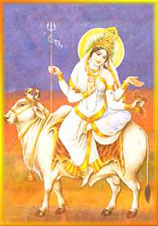
> O.E.A.G. ASTROLOGISCHE GES. <
> J Y O T I S H <
> ASTROLOGIE IN ANCIENT ROME <
GESELLSCHAFT
Die ÖAG ist nach Vereinsstatuten definiert und verfolgt ausschließlich gemeinnützige Zwecke. Der Vereinszweck wird durch wissenschaftliche Forschung, Unterricht und Bildung sowie Information der Öffentlichkeit verwirklicht.
DIE GESCHICHTE DER ÖAG:
1908. Am 24. September 1908 um 20:10 Uhr Ortszeit (19:04:32 GMT) wird in Wien XIX die „Astrologische Gesellschaft“ gegründet. Der Zeitpunkt ist bewusst gewählt. Die Konstellationen des Gründungshoroskopes dennoch schwierig. Ein Planet noch gar nicht entdeckt. Wenig deutet daraufhin, dass hier geboren wird, was einst die älteste astrologische Vereinigung der Welt werden soll. (zum Gründungshoroskop)
Der Zweck des Vereins ist, „das wissenschaftliche Studium der Astrologie in Österreich zu fördern und den Nutzen der astrologischen Wissenschaft der Gesamtheit zu erweisen. Hiebei soll jede mißbräuchliche Anwendung astrologischer Kenntnisse, insbesondere deren gewerbsmäßige Ausbeutung, vermieden und bekämpft werden.“
Gründungsvater ist der Wiener Schauspieler Karl Brandler-Pracht, der 1905 unter dem Titel „Mathematisch instruktives Lehrbuch der Astrologie“ das erste (!) astrologische Lehrbuch in deutscher Sprache veröffentlicht – und damit den Grundstock für die ÖAG-Bibliothek legt. Zuvor hat es lediglich Lehrbücher auf Latein und mehr oder minder unverständliche Übersetzungen antiker Texte gegeben.
Erster Präsident der Gesellschaft wird jedoch nicht Brandler-Pracht, sondern dem kaiserlichen Wien geziemend ein Adeliger, Hofrat Alexander von Sauer-Csáky. Vizepräsidentin wird Baronin Helene Hamar.
Am 24. Oktober 1908 findet um 20 Uhr der erste öffentliche Vortrag statt. Im „Vortragssaale des Wissenschaftlichen Klubs“im Wiener Ingenieur- und Architektenverein in der Eschenbachgasse 9, Wien I. Der Titel lautet: „Die versunkene Atlantis im Lichte der modernen Wissenschaft“. Vortragender ist Julius Nestler, Professor aus Prag. Am darauffolgenden Tag referiert er am selben Ort um 19 Uhr „Zur Geschichte der Astrologe“.
Übrigens wurde die Gründung des Vereins bereits am 20. August 1908 polizeilich genehmigt.
> Meet Vedic Jyotish, Jyotish, Friends and Studies at facebook <
VEDA, VEDIC SCIENCES, PANCHANGAM
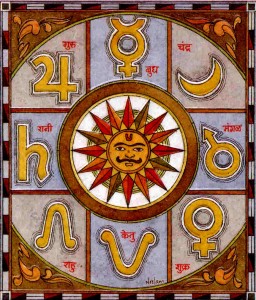
www.astrojyoti.com www.vaisnavacalendar.info
> Hindu astrological almanac <
WHAT IS PANCHANGAM ?
Tamil panchangam, Telugu Panchangam, Kannada Panchangam, Gujarati Panchangam, Marathi Panchangam, Hindi Panchangam, Benglai Panchangam or whatever panchangam you call it. Panchangam means five attributes of Hindu calendar day that is Tithi, Vaar, Nakshatra, Yoga, and Karana.
It is the official astrological calendar of practicing Hindus. It forecasts celestial phenomena such as solar eclipses as well as more mundane occurrences. The study of Panchangam involves understanding Rasi phala, the impact of the signs of the zodiac on the individual. Astrologers consult the Panchangam to set dates for weddings, corporate mergers, and other worldly activities.
These panchangam elements are same across all panchangam — Tamil panchangam, Telugu panchangam, Malayalam panchangam, and Hindi, Gujarati, Marathi, Punjabi, and other panchangam. What is different is how they threat their months/year. Solar months and their starting rules and luni-solar moths. Tamil, Malayalam, Bengali uses solar months and the rules on how month start is determined is different, but rest of information remains same. Panchangam is important part of the Hindu Calendar.
The word panchang is derived from the Sanskrit panchangam (pancha, five; anga, limb), which refers to the five limbs of the calendar: Vaara, Month and Tithi, Nakshatra, yoga, karana. The panchangam may also includes details about Rahu kalam, Yamagandam, Gulika Kalam, Durmuhurtham, Varjyam, Lagna Pravesh tables, daily planetory transists, and other information. The panchangam presented on this website contains enough information for people following different panchangam and they are available for diffferent places in the world.
> Meet Understand and Learn Hindu Panchangam at facebook <
> Meet Free Vaisnava Calender at facebook <
> Meet VEDIC, mathematics, jyotish, astrology, astronomy at fb<
> Meet Biorythm Development Group at facebook <
VASTU SHASTRA
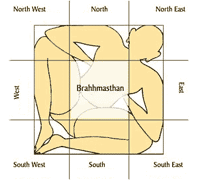
> Shilpa Shastra , Buddhism & Influences<
> Vedic Astrology and Vastu Shastra <
“The vastu-purusha-mandala represents the manifest form of the Cosmic Being; upon which the temple is built and in whom the temple rests. The temple is situated in Him, comes from Him, and is a manifestation of Him. The vastu-purusha-mandala is both the body of the Cosmic Being and a bodily device by which those who have the requisite knowledge attain the best results in temple building.” (Stella Kramrisch,; The Hindu Temple, Vol. I)
Vastu Shastra (vÄ�stu śÄ�stra, also Vastu Veda, „science of construction“, „architecture“) is a traditional Hindu system of design based on directional alignments. It is primarily applied in Hindu architecture, especially for Hindu temples, although it covers other applications, including poetry, dance, sculpture, etc. The foundation of Vastu is traditionally ascribed to the mythical sage Mamuni Mayan.
Manasara and Mayamata are the standard texts on Vastu Shastra, and they codify the theoretical aspects of all types of constructions; but specifically of temple construction. These texts deal with the whole range of architectural science including topics such as soil testing techniques, orientation, measures and proportion, divination, astrology and ceremonies associated with the construction of buildings.
The ancient Indian text Mayamata, written thousands of years ago, describes Vastu Sastra – the science of ancient Indian architecture. Hindu mythology explains the history of how it all started.
Vastu Sastra is both a science and art and its purpose is to make a human habitation not only a thing of beauty and strength but also make it give delight and affluence to the inhabitants in the long run.
Vastu Sastra, apart from being the science of architecture, can also be called the science of energies. The cosmic energies are converted into material benefits for the residents of the Vaastu-based structure and in a way, Einstein’s Theory e=mc2 is reflected in this ancient science. It converts living spaces to an order that sets an equation between the cosmic energies and the people living in the building to ensure physical, spiritual and material well-being. Vaastu creates a rhythm and balance in a building or a layout of a town to ensure a qualitatively better life for the residents.
Although deeply concerned with the Panchamahabhootas or the five primary elements of Nature viz., earth, water, fire, wind and space, and their balancing, it takes into cognizance the various other known and unknown cosmic energies. We understand these energies and try to harness their good influences on human life by a methodical placement of doors and windows, rooms, hearths and ovens, water bodies, open space in and around a building etc.
Experiment, observation and inference were the main criteria of arriving at the truth. However, the additional tool that a wise scholoar should have, is the intuitional perception with which many disciplines of knowledge developed. Various energies run around us in a particular pattern which can be harnessed such that they resonate with the individual being or the people residing in the building in a good manner to make their lives meaningful and harmonious. Various creative, destructive and sustaining energies present in the cosmos are considered and a set of guidelines are given for planning a site, a building, a layout or even a town that which is eco-friendly and contributes to the comfort and contentment of the habitants.
> Meet VASTU, Friends, and Study Groups at facebook <
ASTROLOGYTHROUGHBHRIGU EYE

> ASTROLOGYTHROUGHBHRIGU EYE <
> BRIGHU SAMHITA EBOOK DOWNLOAD <
The Bhrigu Samhita is an astrological (Jyotish) classic attributed to Maharishi Bhrigu during the Vedic period, Treta yuga, although the available evidence suggests that it was compiled over a period of time by the various sishyas (students in the lineage) of Maharishi Bhrigu.
Bhrigu-Samhita: An ancient manuscript with medical matters of interest
The debate on the inclusion of astrology, as a science subject, has been quite acrimonious and at times sanctimonious too. This is evident in several issues of Current Science, other technical and lay publications and in the media.
A good spin-off is the distinct polarization in the academia and the vocal expression of the partisan views. Indeed, such a debate should have been first invited by the UGC, before the decision. Controversy and an evidence-based debate amongst the ‘experts’ is the soul of science and technology. And the eventual consensus and the majority decision are then based on information, data and the level of contended knowledge.
Unfortunately, we still continue to be Lord Macaulay’s educational products. We have not yet revolutionized our memory-loaded learning into conceptbased education. Hence, barring a few exceptions, most of us have no roots in the Indian scientific traditions, languages and age-old knowledge base. We have been raised on a myth that science is universal and not culturally conditioned. Some of us who have attempted to study transcultural aspects of science know better.
During my study for Medicine, I wrote a thesis on ‘The medical aspects of Bhrigu-Samhita’ in 1963. It was a comparative study in the history of medicine. I invited the wrath of my examiners and the thesis was rejected because it was on ‘Ayurveda’!
But what interested me more in Bhrigu-Samhita were the remarkable medical descriptions in Sanskrit, on the circulation of blood, cancer, embolism, etc. I have cited some of these excerpts from the manuscript below:
- ‘The windpipe must be healthy for the movement of pure and impure air to and fro from the lungs. The lungs, in turn, supply the heart with the purified blood. Then the heart circulates the blood to the entire body rather rapidly.’ It is quite a statement in an old Sanskrit manuscript (Bhrigu R II/6: 8–9) (circa 3000 B.C. – Bhrigu Rishi).
- ‘If at times, due to whatever reasons, impure blood, a blood clot, or a piece of fat were to move into the heart, during circulation, this can jeopardize the heart.’ (Bhrigu R II/7: 5–6)
- ‘The germ can also move into the bones or the seat of the heart. The disease is called by the name – Kshaya Roga – The germs are so virulent that via breath a rapid spread can occur from one person to another.’ (Bhrigu R III/20: 5–7)
- ‘At times even the heart will be replaced. Such devices exist in India . . . Indian scientists of a high calibre will one day replace even liver or spleen, in future.’ (Bhrigu R II/10: 1–4)
- ‘Occasionally, diabetics would benefit especially from treatment that is carried out after proper urine examination. There can be help in other diseases too by a careful urine examination.’ (Bhrigu R IV/31: 6–8)
There is an urgent need to salvage many of our ancient manuscripts of medicine, astrology, philosophy, etc. We must conduct 14C-dating to determine the period of the palm-leaf and other manuscripts. But the time has come to look seriously at our heritage in sciences and humanities, without any ancestral vain-glory or an outright rejection because, something does not fit into the western reductionist world-view.
> Meet Shailesh Shaily at facebook <
> Dein Ayurveda Net ….. ” Ayurveda ” <
> Meet Pentavox Herbals, Ayurveda (Biggest Ayurveda Group on fb) <
> Meet many Ayurveda Groups and Friends at facebook <
> Meet Dhanvanthari Groups and Friends at facebook <
> Meet NaturalNews.com at facebook <
NaturalNews.com is an independent news resource that covers the natural health and wellness topics that empower individuals to make positive changes in their personal health. NaturalNews offers uncensored news that allows for healthier choice.


